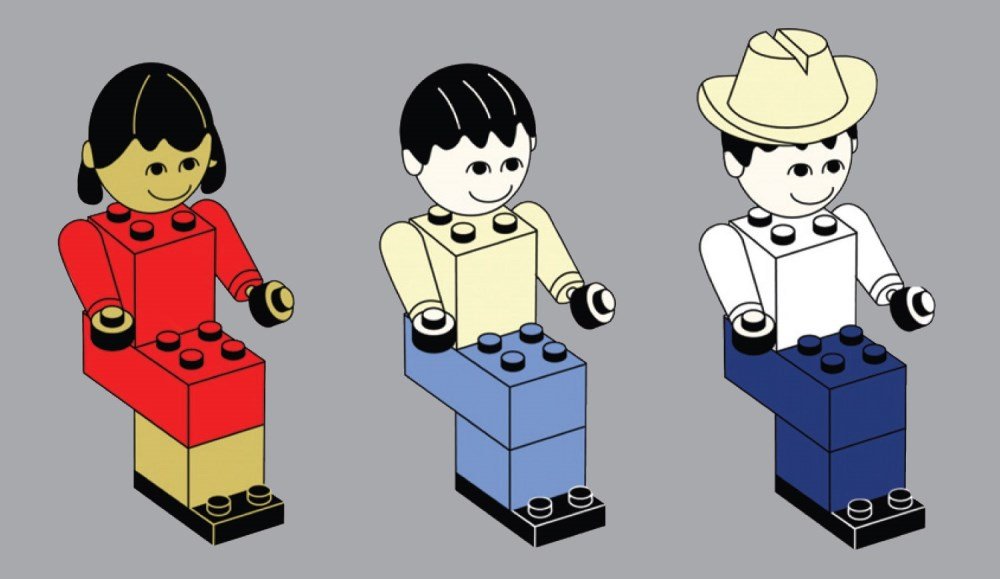 “All Rise and Pray to the Hug Machine”
“All Rise and Pray to the Hug Machine”
Meeting Today’s New Tech Worker
by Kaitlin Anna Boyd Joyce
After having worked at my current tech firm for the larger part of a year, I have come to the conclusion that my co-workers aren’t so much idiots as they are fellow citizens in the thrall of various modes of persistent low-grade autism.
The clinical definition is that they are suffering from mild versions of “pervasive development disorders” or “sensory integration dysfunctions.” Asperger’s syndrome is one variant that has recently garnered much media hype. People with this sort of condition are known as “high functioning” autistics because they can more or less operate in the day-to-day world. Some people like to think of high-functioning autism as a trendy disease. Wrong. It is not a disease, it’s a condition. Most high-functioning autistics resent being talked down to and value their condition. It is not a badge of victimhood for them – it is merely who they are.
Perhaps the broadest way of understanding the world of the high-functioning autistic is to treat all stimuli that impact on the human body not as sensory input but as information bombardment. Most people are able to sift out the day’s excess information without ever thinking about it, but to the tech worker exhibiting autistic – okay, let’s just say the word: geek – to most geeks, a hug is not a hug, it’s the physical equivalent of holding a novelty marine foghorn up to the ear and blasting it directly into the central nervous system. When you hug a geek, you’re overloading them in a manner they find intolerable. They feel and express shock and revulsion when touched.
Here’s a personal example. Low-grade autistics have problems with sensory input, sound being a biggie. My boyfriend, Ethan, is a seemingly average NT (neurotypical), and yet he exhibits a specific autistic variant called hyper acuity. He has a small, specific band of sound frequencies that make him go mental. If I’m in the bathroom with the door closed and Ethan is in the living room watching a Wrestling Entertainment marathon with the volume set on high, all I have to do is clip one of my toenails with a small generic nail clipper and his entire cerebral system shuts down. He screams at me for making “that awful fucking noise.” Likewise, Ethan cannot fall asleep if the Braun eight-cup coffeemaker on the floor below us is turned on because, according to him, it makes a specific brain-spiking click every forty-five seconds. I have pulled a chair up to the coffee maker and sat with my ear pressed right up to it. I have yet to hear such a noise. The fact remains that Ethan screams at me to turnitthefuckoff every forty-five seconds.
Here is another example. My cubicle mate John Doe (yes, that is his legal name – a long story) is a complete geek. He finds an immense sense of relief in performing small specific tasks that cumulatively lead to something larger – a textbook prerequisite of the previously mentioned condition called Asperger’s syndrome. John is ideally suited to the coding universe, where tens of thousands of lines of numbingly dull code string together to make a hockey puck shoot and score with thrilling real-time physics.
I, too, am a geek and have my own set of autism-related problems. I have a mild version of facial blindness, prosopagnosia. It’s hard for me to remember faces and names, and I have trouble telling when someone is either happy or sad. It’s not something I’m too thrilled about.
It turns out that most people suffer from prosopagnosia to some degree. Who out there past the age of twenty-five can get through an entire party without faking a name or two? The entire Dale Carnegie method of Winning Friends and Influencing People boils down to ways of mechanically training yourself past facial blindness. It appalls me that people will like and respect you for no other reason than that you give the illusion of remembering their name. Is that all we are in the end – vain lumps of DNA flattered by the cheesiest of mnemonic devices?
More examples will follow. What is important here is at least to become comfortable with the increasingly more apparent scientific fact that what we describe as “character” and “personality” are not so much spiritual or cosmic states of being, but rather, an overall effect created by clusters of overlapping brain dysfunctions.
Witness the universally understood archetype of the class clown. Is he funny and lovable, or is he farther along the personality spectrum of disinhibition? In the middle of the spectrum you have the bulk of society. Move a bit to the left and you find people who are “talkative” or “funny.” Move a bit more to the left and there’s the class clown. Move along farther and you find a personality who “doesn’t know when to shut up.” Farther still is someone who talks to himself, or perhaps someone with Tourette’s syndrome, which is merely one dimension of disinhibition. Perhaps at the farthest reaches of disinhibition we have the babbling idiot.
Very well. Now then, let’s go back to the centre and move a little the other way. We find a person who is “quiet.” Then we find people who are “shy.” Moving ever rightward, we encounter the “aloof,” then the “loners” and then the “spooky.” At the far right we have the Unabomber frothing away inside his geographically secluded shack.
My point here is that autistic mini-traits exist within the general population, and that microautism seems to favour people in tech and computer industries.







